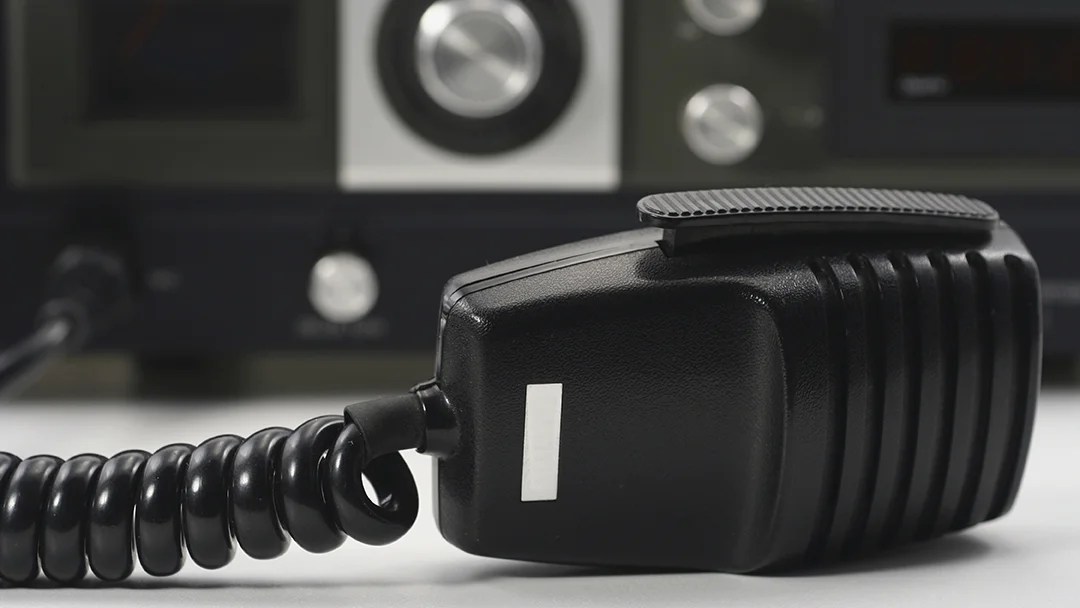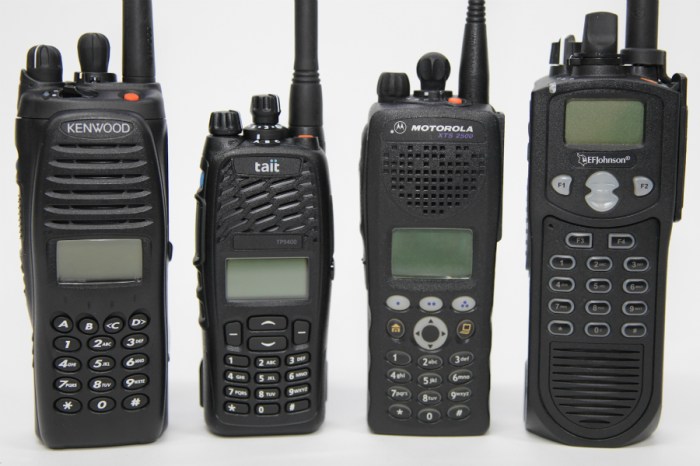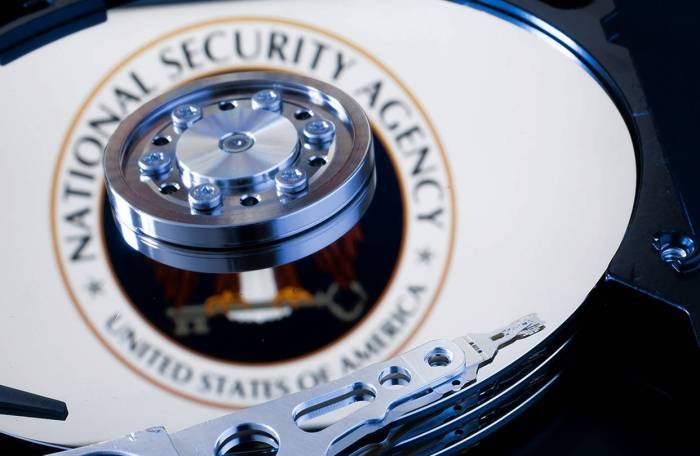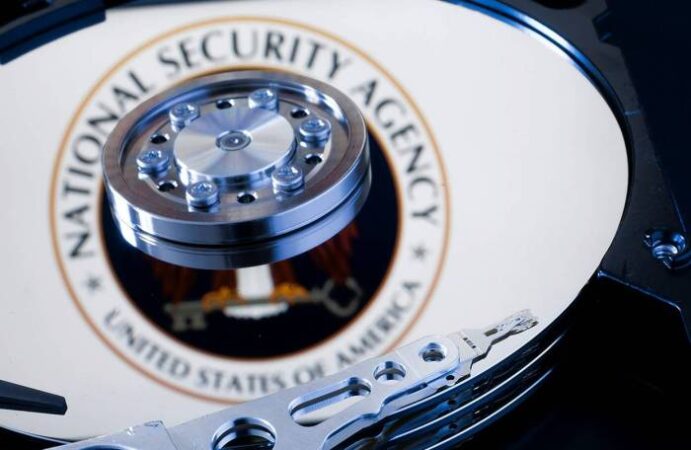
Why does law enforcement use encrypted radios? In the high-stakes world of law enforcement, secure communication is paramount. Encrypted radios play a crucial role in safeguarding sensitive information and ensuring operational efficiency. From protecting investigations to facilitating real-time coordination during emergencies, encrypted communication is essential for maintaining public safety and upholding the law.
The use of encrypted radios has evolved alongside technological advancements, leading to more robust security measures and enhanced communication capabilities. This article explores the multifaceted reasons behind the widespread adoption of encrypted radios by law enforcement agencies, examining the security, operational, legal, and technological considerations that underpin their use.
Security and Privacy

Law enforcement operations often involve sensitive information that must be kept confidential to ensure the safety of officers, witnesses, and the public. Secure communication is essential for maintaining the integrity of investigations, protecting national security, and preventing criminal activity.
Encryption in Law Enforcement Radios
Encryption is a critical security measure that protects sensitive information from unauthorized access. Encryption algorithms transform data into an unreadable format, making it incomprehensible to anyone without the proper decryption key. This ensures that even if a radio signal is intercepted, the information remains confidential.
Real-World Examples of Encryption in Law Enforcement
- During a hostage situation, encrypted communication allows negotiators to coordinate strategies and relay vital information without fear of the hostage-taker listening in.
- In drug trafficking investigations, encrypted communication prevents suspects from being alerted to police surveillance, allowing officers to gather evidence and make arrests.
- During a major crime scene investigation, encrypted communication ensures that the flow of information between officers remains confidential, preventing the spread of misinformation or compromise of evidence.
Encryption Algorithms in Law Enforcement Radios
Several encryption algorithms are commonly used in law enforcement radios, each with its own strengths and weaknesses.
Common Encryption Algorithms
- Advanced Encryption Standard (AES): AES is a widely used and highly secure encryption algorithm that encrypts data in blocks of 128 bits. It is considered a robust and reliable algorithm for protecting sensitive information.
- Triple DES (3DES): 3DES is a symmetric-key block cipher that uses three rounds of DES encryption. It provides a higher level of security than single DES but is slower than AES.
- Blowfish: Blowfish is a symmetric-key block cipher that is known for its speed and efficiency. It is a popular choice for encryption in embedded systems, including law enforcement radios.
Advantages and Disadvantages of Encryption Methods
| Encryption Method | Advantages | Disadvantages |
|---|---|---|
| AES | – High level of security – Widely supported by various systems – Relatively fast encryption and decryption |
– More complex to implement than simpler algorithms – May require more processing power |
| 3DES | – Stronger security than single DES – Widely implemented |
– Slower than AES – Less efficient than AES |
| Blowfish | – Fast and efficient – Suitable for embedded systems |
– May not be as secure as AES or 3DES – Less widely supported |
Operational Efficiency
Encrypted communication significantly enhances operational efficiency in law enforcement by providing a secure and reliable platform for communication between officers, particularly in dynamic and critical situations.
Secure Coordination Between Officers
Encryption ensures that sensitive information exchanged between officers remains confidential, preventing unauthorized access and maintaining the integrity of tactical operations. This is crucial for coordinating actions, sharing intelligence, and maintaining situational awareness during investigations, arrests, and other law enforcement activities. For example, during a high-risk arrest, officers can communicate critical details about the suspect’s location, potential weapons, and tactical plan without the risk of eavesdropping.
Real-Time Communication During Emergencies
Encrypted radios facilitate real-time communication during emergencies, enabling officers to respond swiftly and effectively to critical incidents. In situations like hostage situations, active shooter events, or natural disasters, officers need to communicate vital information quickly and securely. Encrypted communication ensures that these exchanges are protected from interference and interception, allowing for coordinated responses and potentially saving lives.
Scenario of Encrypted Communication
Consider a scenario where a SWAT team is conducting a high-risk raid on a suspected drug trafficking operation. The team needs to coordinate their movements, communicate tactical information, and maintain situational awareness. Encrypted radios allow them to communicate securely, ensuring that their plans and strategies remain confidential and that their movements are coordinated effectively.
Minimizing Interference and Improving Signal Quality
Encryption techniques can also help minimize interference and improve signal quality in challenging environments. This is particularly important in urban areas where radio signals can be congested or affected by external factors. Encryption algorithms can help filter out unwanted noise and interference, ensuring that officers receive clear and reliable communication even in complex environments.
Legal and Ethical Considerations
The use of encrypted communication in law enforcement presents a complex landscape of legal and ethical considerations. Balancing the need for public safety with the protection of individual privacy rights is a constant challenge.
Legal Framework for Encrypted Communication
The legal framework surrounding encrypted communication in law enforcement is evolving. In many jurisdictions, law enforcement agencies have the legal authority to intercept communications, including encrypted ones, under certain circumstances. This typically requires obtaining a warrant based on probable cause. However, the effectiveness of these legal frameworks is often challenged by the rapid advancements in encryption technology.
- The Fourth Amendment: In the United States, the Fourth Amendment to the Constitution protects individuals from unreasonable searches and seizures. This principle is often invoked in discussions about law enforcement access to encrypted communications. The courts have generally held that warrantless searches are unconstitutional, except in limited circumstances.
- The Electronic Communications Privacy Act (ECPA): This federal law governs the interception of electronic communications. The ECPA requires law enforcement to obtain a warrant before intercepting electronic communications, including encrypted ones. However, the ECPA also includes exceptions for certain types of communications, such as those that are readily accessible to the public.
- The Communications Assistance for Law Enforcement Act (CALEA): This law requires telecommunications carriers to provide law enforcement with the capability to intercept communications, including encrypted ones. However, CALEA has been criticized for being outdated and failing to keep pace with technological advancements.
Ethical Implications of Encryption in Law Enforcement
The ethical implications of using encryption in law enforcement are significant. While encryption can enhance operational efficiency and protect sensitive information, it can also create challenges for law enforcement investigations and raise concerns about privacy.
- Privacy Concerns: Encryption can protect the privacy of individuals by preventing unauthorized access to their communications. However, it can also make it more difficult for law enforcement to investigate criminal activity. This raises ethical concerns about balancing privacy rights with public safety.
- Transparency and Accountability: The use of encrypted communication by law enforcement raises concerns about transparency and accountability. If law enforcement agencies are able to operate without oversight, there is a risk of abuse. This can undermine public trust in law enforcement and erode the rule of law.
- Potential for Abuse: While encryption can be used to protect sensitive information, it can also be used to conceal illegal activities. This raises concerns about the potential for abuse by law enforcement or individuals engaged in criminal activities.
Conflicts Between Privacy Rights and Public Safety Concerns
There are often conflicts between privacy rights and public safety concerns in the context of encrypted communication.
- Terrorism Investigations: In cases involving terrorism, law enforcement may need to access encrypted communications to prevent attacks. However, this can come at the expense of individual privacy rights.
- Cybercrime Investigations: Cybercrime investigations often involve the use of encrypted communications. Law enforcement may need to access these communications to identify and apprehend criminals. However, this can raise concerns about the privacy of innocent individuals.
- Child Exploitation Investigations: Law enforcement may need to access encrypted communications to investigate cases of child exploitation. However, this can raise concerns about the privacy of individuals who are not suspected of criminal activity.
Challenges in Accessing Encrypted Communication
Accessing encrypted communication for investigative purposes can be challenging.
- Strong Encryption Algorithms: Modern encryption algorithms are extremely difficult to break. This makes it difficult for law enforcement to access encrypted communications without the cooperation of the individuals involved.
- End-to-End Encryption: End-to-end encryption, where data is encrypted at the source and decrypted at the destination, makes it even more difficult for law enforcement to access encrypted communications. Even with a warrant, law enforcement may not be able to access the data.
- The “Going Dark” Problem: The “going dark” problem refers to the increasing difficulty for law enforcement to access encrypted communications. This is due to the proliferation of end-to-end encryption and the use of encrypted messaging apps.
Transparency and Accountability in the Use of Encrypted Radios
Transparency and accountability are crucial to ensure the ethical and legal use of encrypted radios by law enforcement.
- Public Disclosure of Policies: Law enforcement agencies should publicly disclose their policies regarding the use of encrypted radios, including the circumstances under which encryption is used and the procedures for accessing encrypted communications.
- Independent Oversight: There should be independent oversight of law enforcement agencies’ use of encrypted radios. This could involve judicial review of warrant applications or the establishment of a dedicated oversight body.
- Data Retention and Auditing: Law enforcement agencies should maintain records of their use of encrypted radios, including the date, time, and duration of encryption. These records should be subject to regular audits.
Comparison with Other Communication Systems: Why Does Law Enforcement Use Encrypted Radios

Law enforcement agencies utilize various communication systems to maintain order, respond to emergencies, and conduct investigations. Encrypted radios are one such system, but others are also used, each with its own strengths and weaknesses. This section explores the advantages and disadvantages of encrypted radios compared to other communication systems used by law enforcement.
Comparison of Communication Systems
Different communication systems have their advantages and disadvantages, making them suitable for different situations. The following table compares the key features and functionalities of various communication systems used by law enforcement:
| Communication System | Advantages | Disadvantages | Suitable Scenarios |
|---|---|---|---|
| Encrypted Radios |
|
|
|
| Cellular Phones |
|
|
|
| Text Messaging |
|
|
|
| Internet-Based Communication |
|
|
|
Scenarios for Encrypted Radio Usage
Encrypted radios are particularly well-suited for situations requiring secure and reliable communication, such as:
- Tactical operations: During high-risk operations like hostage situations, raids, or pursuit, encrypted radios ensure secure communication between officers, preventing interception by criminals or hostile forces.
- Emergency response: In emergencies like natural disasters or major accidents, encrypted radios facilitate rapid communication between first responders, ensuring coordinated efforts and efficient response.
- Sensitive investigations: Encrypted radios are essential for maintaining confidentiality during investigations involving sensitive information, protecting witnesses and informants.
- Surveillance operations: Encrypted radios enable covert communication during surveillance operations, preventing detection by suspects or adversaries.
Future of Law Enforcement Communication Systems, Why does law enforcement use encrypted radios
The future of law enforcement communication systems will likely involve a combination of existing technologies and emerging innovations. The integration of encrypted radios with other communication systems, such as cellular networks and internet-based platforms, will enhance capabilities and provide more flexibility.
The use of artificial intelligence (AI) and machine learning (ML) in communication systems will enable real-time translation, automatic transcription, and improved situational awareness.
Additionally, the development of new technologies like quantum communication and blockchain-based encryption will enhance security and privacy.
Conclusion

The use of encrypted radios by law enforcement is a testament to the evolving nature of communication in the 21st century. As technology continues to advance, the importance of secure and reliable communication for law enforcement operations will only grow. The intricate balance between public safety, privacy, and technological innovation will remain a key focus as law enforcement agencies navigate the complexities of encrypted communication in the years to come.
FAQ
What are the most common encryption algorithms used in law enforcement radios?
Common algorithms include Advanced Encryption Standard (AES), Triple DES (3DES), and Blowfish. The specific algorithm used may vary depending on the manufacturer and model of the radio.
How do encrypted radios ensure secure communication between officers in the field?
Encrypted radios use algorithms to scramble the transmitted data, making it unintelligible to anyone without the decryption key. This prevents unauthorized access to sensitive information exchanged between officers.
What are the potential challenges in accessing encrypted communication for investigative purposes?
Law enforcement agencies may face challenges in accessing encrypted communication for investigations due to privacy concerns and legal limitations. Obtaining a warrant or court order may be required to access encrypted data.
How does encryption minimize interference and improve signal quality?
Encryption can help reduce interference by limiting the range of the signal and preventing unauthorized access. This can improve the clarity and reliability of communication, especially in crowded or noisy environments.



